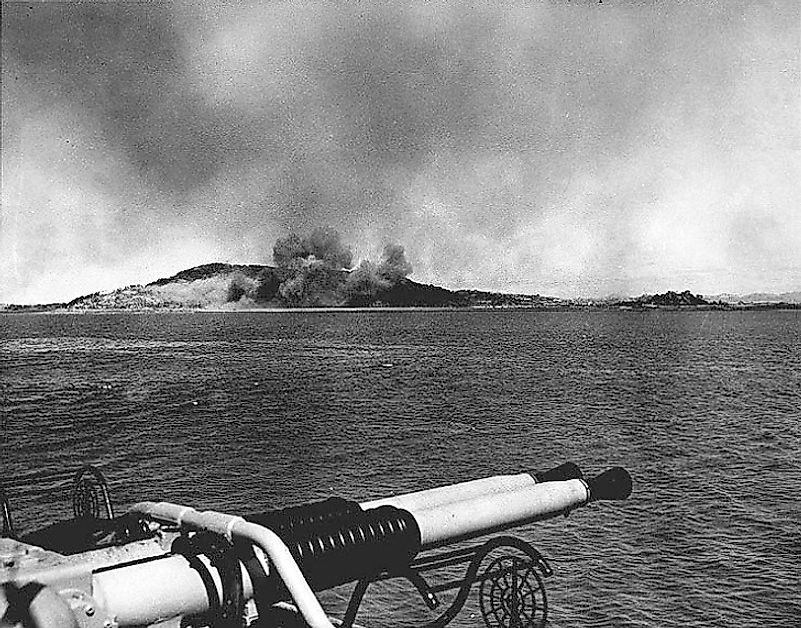Battle Of Incheon - Korean War

5. Background
The Battle of Inchon refers to an amphibious invasion and that was part of the battle of the Korean War which took place between September 15th and September 19th, 1950, resulting in the recapture of the Korean capital, Seoul. The code name of the operation was Operation Chromite. Since the outbreak of the Korean War as a result of the invasion of the South Korea by the North Korea on June 25th, 1950, the military outfit of the North Korea enjoyed superiority both in terms of manpower and equipment over their North Korean counterparts. The United Nations was therefore deployed to South Korea to prevent it from collapsing as a result of further assaults by the North. It is against this backdrop that the Pusan Perimeter was established in August of the same year to enable the United Nations' (UN) troops hold a continuous line that the North Koreans could not flank. The North Koreans approached the Perimeter on August the 5th and attempted an assault on it but they were repelled by the more logistically-advantaged U.N forces and by the end of that month, their troops had been pushed beyond their limits.
4. Makeup
The opposing sides in this battle were the UN troops, that were comprised by forces from the United States, the United Kingdom, Canada, France and South, Korea against the North Korean forces. The United Nations and South Korean forces were commanded by General of the Army, Douglas MacArthur of the United States Army, assisted by Arthur Dewey Struble, Edward M. Almond and Oliver P. Smith, all from the United States. In addition, there were commanders from the Republic of South Korea, Shin Hyun-Joon and Paik In-Yeop. On the North Korean side, the commander was Kim 11-Sung, assisted by Choi Yong-kun, Woi Ki Chan and Wan Yong. The UN strength included 40,000 infantrymen, 4 cruisers, 7 destroyers 1 armed sampan, and an unknown number of other naval forces. On the North Korean side, there were 6,500 infantrymen, 19 aircraft, 1 fortress, 1 patrol boat and unknown number of artillery.
3. Description
The UN executed an unprecedented tactic by conducting a pre-invasion operation that was code named Operation Trudy Jackson. The operation involved the landing of a joint CIA-military intelligence team on Yonghung-Do Island, and was launched a week before the actual landings on Inchon. The operation was led by Navy Lieutenant Eugene Clark and it provided the UN troops with military intelligence. Suspicion of their activities led North Korea to dispatch a boat to investigate them, one which Clark’s men easily sunk, leading to retribution by the North Korean People’s Army by way of killing 50 civilians who they believed helped Clark. As this was happening, UN cruisers and destroyers were nearing Inchon and on the morning of September 15th, 1950, the invasion fleet moved into position and what ensued was a full-scale battle.
2. Outcome
The UN succeeded in securing Inchon, but not after suffering heavy casualties. The UN suffered casualties of about 566 killed and 2,713 wounded. The casualties were suffered both during the Inchon landing as well as the subsequent battle for the city. On the other hand, the NKPA lost more than 35,000 men, either killed or captured. In addition, the UN lost 2 cruisers, 3 destroyers and 1 armed sampan, both at sea, as well as one aircraft that was shot down. The North Korean side on the other hand lost one aircraft in addition to the patrol boat that was sunk in the build-up to the war.
1. Significance
The Battle of Inchon was a major turning point in the Korean War, as it ended a string of victories by the North Koreans over the South Koreans. The North Korean forces were pursued beyond their limits, and the subsequent recapture of Seoul partially severed there supply lines in South Korea. After recovering South Korea, the UN troops pressed into the north and advanced further. However, the UN forces were later to withdraw back south in late November, after Chinese troops poured into North Korea for reinforcement. Not only did the battle help secure Seoul, it also saw the UN forces capture one of the most important airfields on the Korean Peninsula, the Kimpo Air Base. It is considered by many historians and military analysts to be the most decisive victory in the Korean War.







